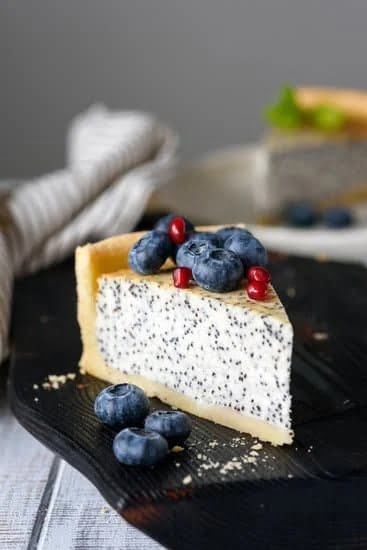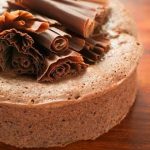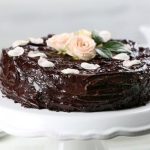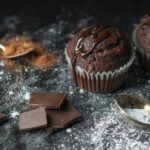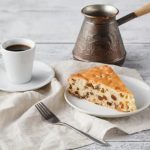Whether you’re a seasoned baker or just starting out, mastering the art of cake decoration is an essential skill to have in your culinary repertoire. One key element that can take your cakes from ordinary to extraordinary is decorator frosting. With its smooth and creamy texture, decorator frosting is the perfect medium for creating intricate designs and adding those eye-catching finishing touches.
Decorating a cake isn’t just about making it look visually appealing; it’s about creating an unforgettable experience for anyone who takes a bite. The right choice of frosting can make all the difference, elevating the taste and texture of the cake while adding that extra wow factor. Decorator frosting not only enhances the overall aesthetic appeal but also offers endless possibilities for creative expression through various piping techniques and personalized designs.
But what exactly is decorator frosting? How do you make it? And what are the secrets to achieving that perfect consistency and texture?
In this article, we will delve into all these questions and more, providing you with a comprehensive guide on mastering the art of making and using decorator frostings. Whether you’re looking to create beautifully decorated birthday cakes, wedding cakes, or any other occasion cakes, this article will equip you with the knowledge and skills needed to take your cake decorating game to new heights.
So gather your ingredients, sharpen your piping skills, and prepare yourself for an exciting journey into the world of decorator frostings. From understanding the basics to exploring different flavors and colors, we will cover it all.
Get ready to turn simple cakes into stunning works of art that not only taste divine but also leave a lasting impression on everyone who sees them. Let’s dive in and discover how decorator frostings can be your secret weapon in creating show-stopping cakes.
What is Decorator Frosting
Decorator frosting is a crucial component in cake decoration, as it not only adds visual appeal but also enhances the taste and texture of the cake. Understanding the basics of decorator frosting is essential for every baker or cake decorator, as it forms the foundation for creating stunning designs and achieving professional-looking results.
Decorator frosting, also known as buttercream frosting, is a type of icing that is commonly used to decorate cakes, cupcakes, and other baked goods. It is made by combining butter or shortening with powdered sugar and flavorings such as vanilla extract or cocoa powder. The ingredients are beaten together until they reach a smooth and creamy consistency.
The key characteristic of decorator frosting is its ability to hold its shape when piped or spread onto a cake. This makes it ideal for creating intricate designs using piping bags and various tips. Decorator frosting can be colored using gel food coloring, allowing bakers to explore endless possibilities in terms of colors and patterns.
To achieve different consistencies for different decorating techniques, decorators often adjust the amount of liquid added to the frosting. A stiffer consistency is typically used for piping details such as borders or flowers, while a softer consistency is preferred for spreading onto cakes or creating smooth surfaces. Having control over the consistency of decorator frosting enables decorators to execute their creative vision seamlessly.
TABLE
| Ingredients | Quantity |
|---|---|
| Butter | 1 cup (227g) |
| Powdered Sugar | 4 cups (460g) |
| Milk or Heavy Cream | 1/4 cup (60ml) |
| Salt | 1/4 teaspoon |
| Vanilla Extract | 2 teaspoons |
Gathering the Ingredients
To create the perfect decorator frosting, it is crucial to gather all the necessary ingredients. This comprehensive list includes everything you need to ensure the best results for your cake decorations.
- Butter: Start with unsalted butter at room temperature. Using butter adds richness and smoothness to the frosting. Make sure it is soft enough for easy blending.
- Confectioners’ Sugar: Also known as powdered sugar, this sweet ingredient provides the necessary sweetness and structure to the frosting. Sift the sugar beforehand to remove any lumps.
- Vanilla Extract: A few teaspoons of pure vanilla extract enhance the flavor of decorator frosting. It gives a hint of warmth and depth that complements various cake flavors.
- Milk or Heavy Cream: Liquid ingredients like milk or heavy cream are needed to achieve the desired consistency of the frosting. This helps in easier spreading or piping onto the cake.
- Food Coloring: Depending on your design objectives, gather an assortment of gel-based food colors in vibrant shades or pastels to bring your creations to life.
- Salt: Just a pinch of salt can balance out the sweetness and enhance the overall flavor profile of decorator frosting.
- Flavor Extracts (optional): For additional flavor variations, consider using almond, lemon, or other extracts that complement your cake flavor.
Gathering Ingredients Chart
| Ingredients | Quantity |
|---|---|
| Unsalted Butter | 1 cup (226g) |
| Confectioners’ Sugar (Powdered Sugar) | 4 cups (480g) |
| Vanilla Extract | 2 teaspoons |
| Milk or Heavy Cream | 2-4 tablespoons |
| Food Coloring | As desired |
| Salt | A pinch |
| Flavor Extracts (optional) | To taste |
When gathering the ingredients, it is essential to ensure that they are of excellent quality. Fresh butter and properly measured confectioners’ sugar will contribute to the ideal texture and taste of your decorator frosting. Additionally, using gel-based food coloring provides vibrant shades without diluting the consistency of the frosting.
Keep in mind that these quantities are guidelines, and you can adjust them based on your preferences and requirements. It is always recommended to taste as you go and make any necessary adjustments to achieve the desired flavor, sweetness, and consistency of the decorator frosting. With all the ingredients readily available, you are now ready to dive into the step-by-step tutorial for making your own delicious decorator frosting.
Step-by-Step Tutorial
Decorating a cake with beautiful frosting designs can be an art form, and mastering the technique requires practice and skill. In this section, we will provide you with a comprehensive step-by-step tutorial on how to make decorator frosting that will take your cake decorating skills to the next level.
Step 1: Gather Your Ingredients
Before beginning the process of making decorator frosting, it is essential to have all your ingredients ready. Here is a list of what you will need:
- Butter: 1 cup (unsalted, softened)
- Confectioners’ sugar: 4 cups
- Milk or heavy cream: 1/4 cup
- Vanilla extract: 2 teaspoons
Step 2: Cream the Butter
In a large mixing bowl, cream the softened butter until it becomes light and fluffy. You can use an electric mixer for this step to make it easier and quicker. It’s important that your butter is at room temperature before starting to ensure even mixing.
Step 3: Gradually Add Confectioners’ Sugar
Next, gradually add the confectioners’ sugar to the creamed butter while continuing to mix. Adding it gradually helps prevent lumps from forming and allows for a smoother consistency. Keep mixing until all the sugar is well incorporated into the butter mixture.
Step 4: Add Milk or Heavy Cream
After incorporating all of the confectioners’ sugar into the mixture, add milk or heavy cream and vanilla extract. Gradually pour in small amounts of milk or cream while continuously beating the mixture on low speed. This step helps achieve a creamy consistency that is easy to spread and work with.
Step 5: Beat Until Light and Fluffy
Continue beating the mixture until it becomes light and fluffy. The frosting should hold its shape when piped but remain soft enough to spread smoothly on your cake.
Congratulations. You have now mastered the art of making decorator frosting. With this versatile recipe, you can create beautiful designs on your cakes that will surely impress your friends and family. Combine it with your newfound knowledge of piping and decorating techniques to take your cake decorating skills to new heights.
Tips and Tricks for Achieving the Perfect Consistency and Texture
Achieving the perfect consistency and texture is crucial when working with decorator frosting. It can make a significant difference in the final look and feel of your cake decoration. Here are some tips and tricks to help you achieve the desired results:
Gradual Addition of Liquid
The consistency of your decorator frosting is largely dependent on the amount of liquid added. Whether it’s milk, water, or any other liquid ingredient, it’s important to add it gradually. Start by adding small increments and mix well before adding more. This will allow you to have better control over the consistency and avoid making your frosting too thin.
Adjusting the Sugar or Liquid
If your decorator frosting turns out too thick, you can add small amounts of liquid at a time until you reach the desired consistency. Similarly, if your frosting is too thin, you can gradually incorporate more powdered sugar until it thickens up. Always make adjustments in small quantities to avoid going beyond the desired consistency.
Soft Peaks for Stiff Consistency
For piping intricate designs or creating three-dimensional decorations, a stiff consistency is required. To achieve this, beat your decorator frosting until soft peaks form when using an electric mixer or whisk attachment on medium-high speed. Soft peaks should be able to hold their shape but still have some flexibility.
Smooth and Creamy Texture
To ensure a smooth and creamy texture in your decorator frosting, always start with room temperature butter or shortening. Cream them properly before adding other ingredients such as powdered sugar and flavorings. Be sure to scrape down the sides of your mixing bowl regularly during the process to avoid lumps and achieve a uniform texture.
Chilling for Firmer Frosting
If you find that your decorator frosting is too soft or not holding its shape well, you can chill it in the refrigerator for a few minutes. This will help firm up the frosting, making it easier to work with and more stable for intricate decorations.
By keeping these tips and tricks in mind, you’ll be able to achieve a decorator frosting with the perfect consistency and texture every time. Remember, practice makes perfect, so don’t be discouraged if it takes a few attempts to get it just right. With patience and perseverance, you’ll soon be creating beautifully decorated cakes that will impress everyone who sees them.
Creative Variations
One of the exciting aspects of using decorator frosting is the ability to explore a wide range of flavors and colors. By experimenting with different variations, you can create unique and personalized designs for your cakes that not only look beautiful but also taste delicious. In this section, we will delve into the world of creative variations for decorator frosting, exploring different flavors and colors that will take your cake decorating skills to new heights.
Flavor Variations
- Classic Vanilla: The timeless flavor of vanilla is always a hit. To create a classic vanilla decorator frosting, simply add a teaspoon of pure vanilla extract to your standard frosting recipe. For an extra boost of flavor, you can also scrape the seeds from a vanilla bean pod and incorporate them into the frosting.
- Chocolate Delight: For the chocolate lovers out there, adding cocoa powder or melted chocolate to your decorator frosting can transform it into a rich and decadent topping. Make sure to use high-quality cocoa powder or dark chocolate for an intense chocolaty flavor.
- Fruity Bliss: Incorporating fruit flavors into your decorator frosting can add a refreshing twist to your cakes. Puree fresh berries such as strawberries, raspberries, or blueberries and mix them into your frosting. Alternatively, you can use extracts or fruit concentrates to achieve fruity flavors without altering the consistency of your frosting.
Color Variations
- Pastel Perfection: Achieving delicate pastel shades in your decorator frosting can be done by using gel food coloring. These concentrated colorings require only a small amount to produce vibrant hues while maintaining the smooth texture of the frosting.
- Vibrant Rainbow: To create bold and vibrant colors for eye-catching designs on your cakes, consider using powdered food coloring. Powdered colors are highly pigmented and can easily be mixed into the frosting for intense shades that are sure to impress.
- Natural Tones: If you prefer natural colors, you can explore using natural food coloring options such as beetroot powder for red, matcha powder for green, or turmeric for yellow. These natural alternatives can give your decorator frosting a unique and organic touch.
By experimenting with various flavor and color combinations, you can truly elevate your cake decoration skills. Don’t be afraid to mix and match different variations to create your signature decorator frosting that will leave everyone in awe of your creations.
Expert Secrets
Piping and decorating with decorator frosting can be an art form in itself. Whether you’re a beginner or have some experience, learning from the experts can take your cake decoration skills to the next level. In this section, we will share some pro tips that will help you achieve professional-looking designs with your decorator frosting.
One of the first things to consider when piping and decorating with decorator frosting is the consistency of the frosting. It should be firm enough to hold its shape, but also smooth enough to easily squeeze through a piping bag. To achieve this ideal consistency, start by following the recipe instructions precisely.
If the frosting is too stiff, add small amounts of liquid (milk or water) until it becomes more manageable. On the contrary, if it’s too soft, gradually add more powdered sugar until it thickens up.
Another important tip is to practice using different piping tips and techniques to create various designs. Experimenting with different shapes and sizes can bring your cake decorations to life and add visual interest. Start with basic tips like round or star-shaped ones and gradually move on to more intricate designs as you gain confidence. Remember that technique plays a significant role in achieving clean lines and crisp detailing.
In addition to mastering your piping skills, it’s essential to have a steady hand when working with decorator frosting. One way to ensure precision is by using a turntable or lazy Susan when decorating your cakes. This allows you to rotate the cake smoothly as you pipe, making it easier to achieve even coverage and consistency throughout your design. Additionally, keeping your hands relaxed while handling the piping bag can help you maintain control over your movements.
By incorporating these pro tips into your cake decorating process, you’ll be able to take full advantage of decorator frostings’ versatility and create stunning designs that showcase your creativity and skill. Don’t be afraid to experiment and try new techniques. Remember that practice makes perfect, and with time, you’ll become more comfortable and confident in working with decorator frosting to make your cakes truly extraordinary.
Troubleshooting
Problem: Lumpy Frosting
One of the most common issues when working with decorator frosting is ending up with a lumpy texture. This can make it difficult to achieve a smooth and even finish on your cakes.
- Solution: To avoid lumpy frosting, it is important to sift your powdered sugar before adding it to the other ingredients. This will help remove any clumps or impurities that might be present in the sugar. Additionally, ensure that your butter or shortening is at room temperature and properly softened before creaming it with the other ingredients. Be sure to mix everything well until no lumps remain, using an electric mixer if necessary.
Problem: Runny Frosting
Another common issue that individuals face when making decorator frosting is ending up with a runny consistency. This can make it challenging to pipe intricate designs or achieve a smooth finish on your cakes.
- Solution: If your frosting turns out too runny, there are a few steps you can take to thicken it up. First, try adding more powdered sugar gradually until you reach the desired consistency. Alternatively, refrigerate the frosting for 10-15 minutes to allow it to firm up slightly before using. If these methods don’t work, you can incorporate small amounts of cornstarch or meringue powder into the mixture until the desired thickness is achieved.
Problem: Air Bubbles in Piped Designs
Sometimes when piping designs onto cakes using decorator frosting, air bubbles can form and create imperfections in your finished decoration.
- Solution: To prevent air bubbles from forming while piping, make sure to eliminate any air pockets within the piping bag before starting. Before filling your bag with frosting, gently squeeze out any excess air by applying pressure near the tip of the bag and smoothing out any wrinkles or folds.
Additionally, when piping, apply steady pressure to ensure a smooth flow of frosting without creating air bubbles. If air bubbles do appear, simply gently tap the surface of the piped design with a toothpick or small offset spatula to release trapped air.
By being aware of these common issues and knowing how to troubleshoot them, you can confidently work with decorator frosting and achieve beautiful cake decorations every time.
Inspirational Ideas
Decorator frosting opens up a world of creative possibilities when it comes to cake decoration. With its smooth texture and easy-to-pipe consistency, decorator frostings allow home bakers and professional decorators alike to create stunning designs that transform ordinary cakes into works of art. In this section, we will explore some inspirational ideas for showcasing beautiful designs and cake decorations using decorator frostings.
One popular technique for creating visually appealing designs is the use of piping bags and tips. By simply changing the tip on your piping bag, you can achieve different shapes and patterns. For example, a star tip can create delicate rosettes or a basket weave pattern, while a round tip can create precise dots or lines. Experiment with different tips and practice your piping skills to add intricate detailing to your cakes.
Another way to elevate your cake decorations is by incorporating different colors into your decorator frosting. You can achieve vibrant hues by using food coloring gels or even natural dyes like beet juice or matcha powder. Consider using a combination of complementary colors or blending shades together to create an ombre effect. Remember to start with small amounts of coloring and build up as needed to achieve your desired shade.
When it comes to designing the overall look of your cake, consider themes or aesthetics that resonate with the event or occasion you are celebrating. For example, if you’re decorating a birthday cake for a child who loves animals, you could use decorator frosting to create fondant animals or piped buttercream flowers in bright colors for spring-themed cakes. Take inspiration from nature, art, or even fashion trends to design unique and eye-catching cake decorations.
Conclusion
In conclusion, mastering the art of making decorator frosting is an essential skill that can greatly elevate your cake decorating abilities. By understanding the basics, gathering the right ingredients, and following a step-by-step tutorial, you can create beautiful and professional-looking designs on your cakes.
One of the key factors in achieving the perfect consistency and texture of decorator frosting lies in using the right techniques. With tips and tricks such as gradually adding liquid or powdered sugar to adjust the thickness, chilling the frosting for intricate piping work, or using different icing tips for various designs, you can ensure that your decorations turn out flawless every time.
Moreover, exploring creative variations with flavors and colors allows you to personalize your cakes and give them a unique touch. From classic vanilla or chocolate frostings to unconventional options like citrus or cinnamon, there are endless possibilities for experimenting and creating delicious combinations that will impress both the eyes and taste buds.
Ultimately, by familiarizing yourself with expert secrets for piping and decorating with decorator frosting, you can take your cake decoration skills to new heights. Techniques such as practicing consistent pressure when piping lines or detailing, using a piping bag fitted with a coupler for easy tip changes, or incorporating different textures through brushing or combing techniques will give your creations a polished and professional finish.
Finally, keep exploring inspirational ideas from stunning cake decorations using decorator frostings. Pinterest boards and food blogs are great resources for finding inspiration on trendy design techniques like ombre effects, floral patterns, or even 3D sculpted creations. By adapting these ideas to fit your own style and preferences, you can truly unleash your creativity and become a cake decorating maestro.
Frequently Asked Questions
What is the best frosting to decorate a cake with?
The best frosting to decorate a cake with depends on personal preference and the desired outcome of the decoration. However, one popular choice is buttercream frosting. Buttercream is creamy, smooth, and easy to work with, making it ideal for piping intricate designs or creating smooth surfaces on cakes.
It also has a delicious flavor that complements various cake flavors well. Another option could be fondant, which is a pliable icing that can be rolled out and draped over cakes for a clean, polished look. Fondant allows for more precise decorations and can create beautifully sculpted designs.
What frosting do professionals use?
Professionals in the baking industry often use different types of frostings depending on the specific needs of their clients and their own expertise. While there isn’t just one frosting exclusively used by professionals, some commonly used options include Swiss meringue buttercream, Italian meringue buttercream, or ganache. Swiss meringue buttercream is made by whisking egg whites and sugar over heat and then incorporating softened butter into the mixture until light and fluffy.
This type of frosting holds up well in professional settings as it creates a smooth finish that can be easily piped into intricate designs. Italian meringue buttercream follows a similar process but adds a hot sugar syrup to egg whites for added stability.
Is decorating icing the same as frosting?
Decorating icing and frosting are not exactly the same thing but are closely related terms used to describe different types of cake decoration elements. Frosting generally refers to any sweet coating or filling used on cakes, cupcakes, or pastries – it encompasses various types such as buttercream, cream cheese frosting, ganache, etc. On the other hand, decorating icing specifically refers to icings that have been prepared or formulated specifically for decorating baked goods—whether it’s adding patterns or intricate designs using piping bags or creating elaborate sculptures using molded icing techniques like gum paste flowers or royal icing decorations.
Decorating icings need to have specific consistencies and qualities that make them suitable for precise decorating techniques, such as holding their shape when piped or being easily spreadable for smooth surfaces. Ultimately, while all decorating icings are frostings, not all frostings are specifically formulated for decorating purposes.

Welcome to our cake decorating blog! My name is Destiny Flores, and I am the proud owner of a cake decorating business named Cake Karma. Our mission is to provide delicious, beautiful cakes for all occasions. We specialize in creating custom cakes that are tailored specifically to each customer’s individual needs and tastes.

